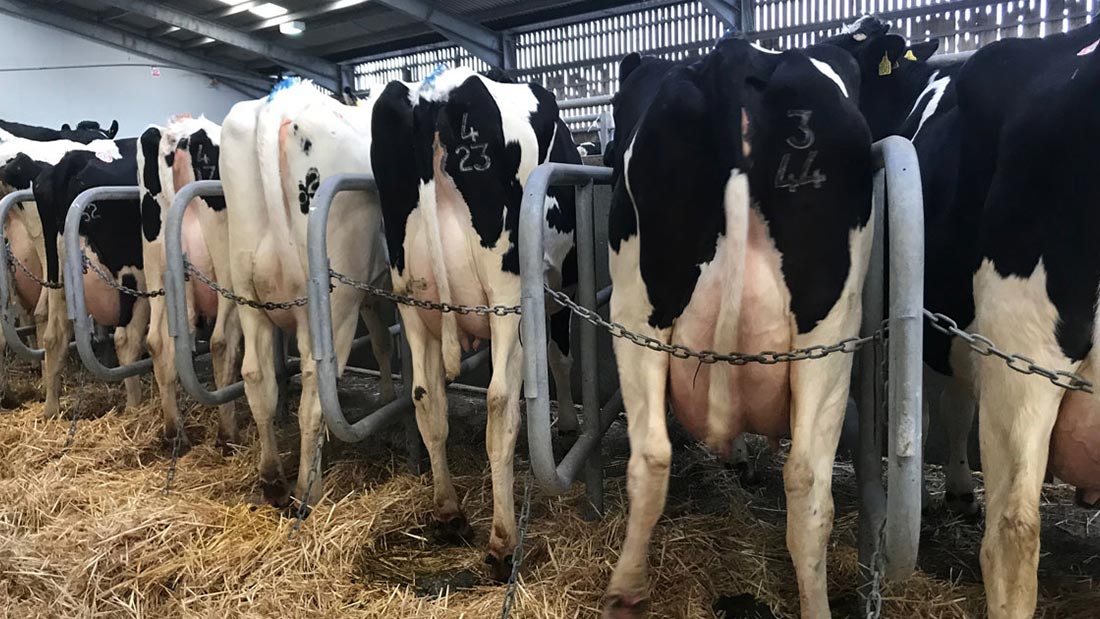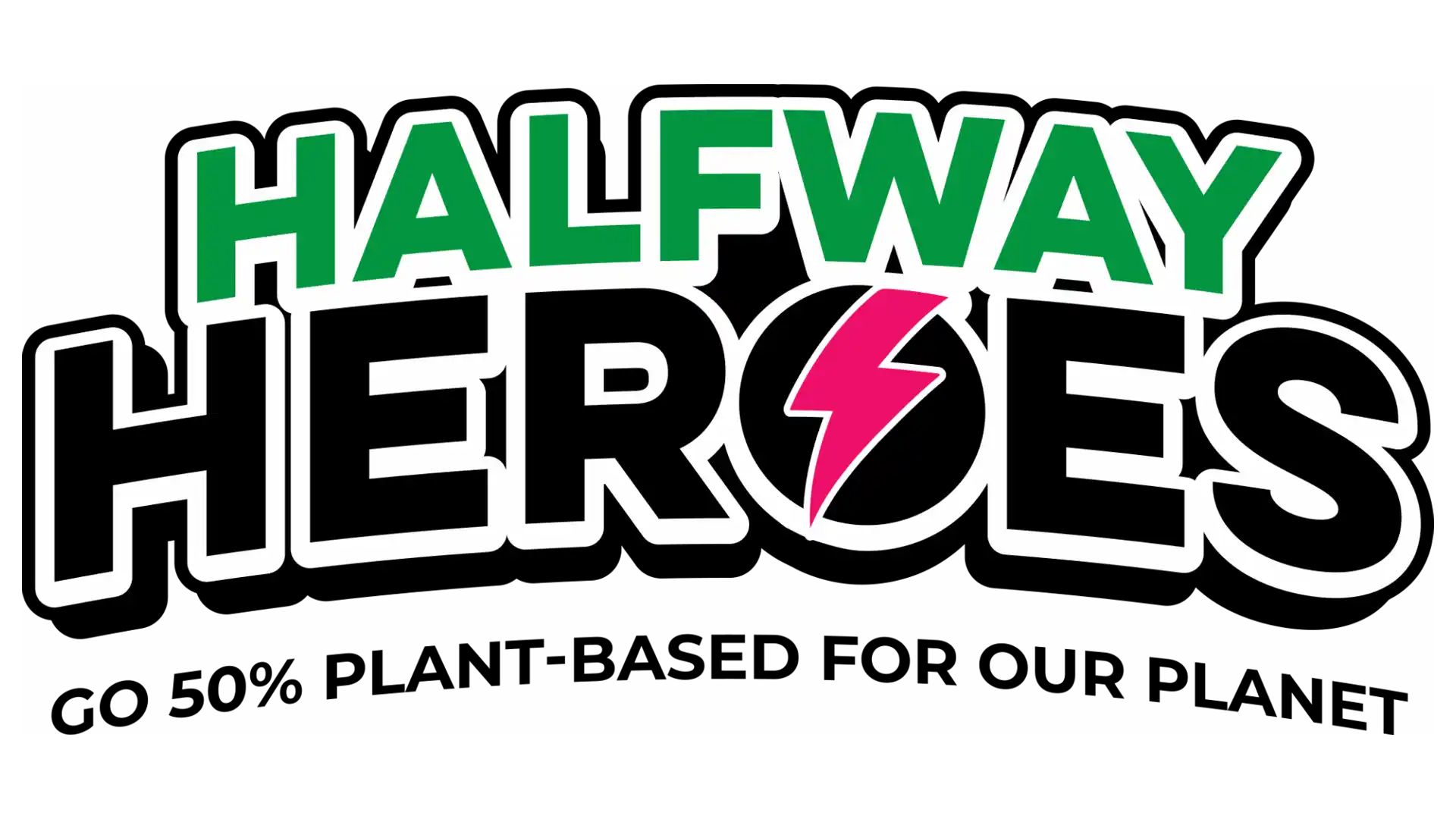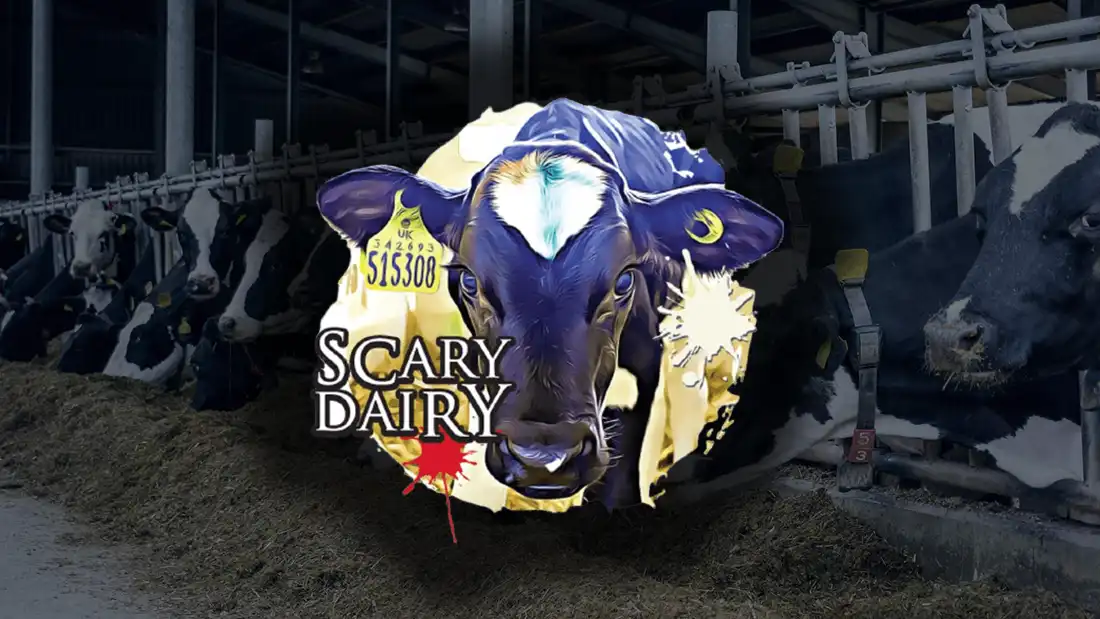E. Coli and the Deadly Threat from 0157

It’s not just dangerous viruses lurking in factory farms, such places provide the perfect environment for pathogenic bacteria to spread and evolve too. Escherichia coli (E. coli) are a type of bacteria that live in the intestines of many mammals, birds and reptiles. They are a large and diverse group and although most strains are harmless, others can make you very ill, causing diarrhoea, urinary tract infections, respiratory illness or pneumonia
There are over 700 types (serotypes) of E. coli, around 200 of them produce a toxic substance known as Shiga toxin and over 100 have been associated with human disease.4ECDC. 2017. Facts about Escherichia coli. Available: https://www.ecdc.europa.eu/en/escherichia-coli-ecoli/facts [Accessed 2 June 2022]. If Shiga toxins are released in the gastrointestinal tract by bacteria they can cross the epithelial barrier in the gut and kill cells lining blood vessels. For example, the vascular endothelium of the glomerulus (the kidney’s filtering structure) appears to be a particular target. Damage to these cells can lead to haemolytic uraemic syndrome (HUS), a serious condition that can result in kidney failure. The most important Shiga toxin-producing E. coli (STEC) in relation to public health is called STEC O157:H7. However, others have caused infections and outbreaks.
E. coli O157:H7 and other Shiga toxin-producing E. coli are found in the gut and faeces of many animals including: cows, sheep, goats, deer, moose, pigs, horses, dogs, cats, pigeons, chickens, turkeys and gulls.5Chekabab SM, Paquin-Veillette J, Dozois CM et al. 2013. The ecological habitat and transmission of Escherichia coli O157:H7. FEMS Microbiology Letters. 341 (1) 1-12. In the UK, the predominant animal reservoirs are cows and sheep.6Treacy J, Jenkins C, Paranthaman K et al. 2019. Outbreak of Shiga toxin-producing Escherichia coli O157:H7 linked to raw drinking milk resolved by rapid application of advanced pathogen characterisation methods, England, August to October 2017. Euro Surveillance. 24 (16) 1800191. Infections (colonisation) in animals normally does not cause illness; animals can appear relatively healthy but can spread E. coli O157:H7 to humans and other animals.
Because E. coli O157:H7 is shed in the faeces of ruminants, it has been “implicated in outbreaks of human disease via the cross-contamination of foods and direct contact with the faeces of affected animals” according to the UK Food Standards Agency.9FSA. 2013. Feasibility of introducing methods, in the UK, for reducing shedding of E. coli O157 in cattle. Available: https://www.food.gov.uk/research/foodborne-disease/feasibility-of-introducing-methods-in-the-uk-for-reducing-shedding-of-e-coli-o157-in-cattle [Accessed 2 June 2022]. E. coli O157:H7 can be spread in several ways including:
- Eating contaminated food (such as undercooked meat or raw leafy vegetables contaminated with animal faeces)
- Touching infected animals or coming into contact with their faeces
- Drinking water from inadequately treated water supplies
- Swimming or playing in contaminated water, such as ponds or streams
- Contact with people who have the illness, particularly if you do not wash your hands thoroughly after using the toilet or before handling food
Source:10NHS Inform. 2020. Escherichia coli (E. coli) O157. Available: https://www.nhsinform.scot/illnesses-and-conditions/infections-and-poisoning/escherichia-coli-e-coli-o157 [Accessed 2 June 2022].
E. coli O157:H7 first emerged as a zoonotic public health threat in 1982 when two outbreaks of an unusual gastrointestinal illness affected at least 47 people in Oregon and Michigan in the US. The illness was characterised by “severe crampy abdominal pain, initially watery diarrhoea followed by grossly bloody diarrhoea.”17Riley LW, Remis RS, Helgerson SD et al., 1983. Hemorrhagic colitis associated with a rare Escherichia coli serotype. New England Journal of Medicine. 308 (12) 681-685. The infections were linked to undercooked burgers eaten in a number of branches of a well-known fast-food restaurant chain.
The first outbreak in the UK occurred in 1983, when stools from three patients tested positive in a cluster of 11 cases of HUS in children from Wolverhampton in the West Midlands.18Pennington TH. 2014. E. coli O157 outbreaks in the United Kingdom: past, present, and future. Infection and Drug Resistance. 7, 211-222. Throughout the 1980s, there were an increasing number of outbreaks of gastrointestinal disease and HUS associated with E. coli O157:H7.19Yara DA, Greig DR, Gally DL et al. 2020. Comparison of Shiga toxin-encoding bacteriophages in highly pathogenic strains of Shiga toxin-producing Escherichia coli O157:H7 in the UK. Microbial Genomics. 6 (3) e000334.
E. coli O157:H7 is a public health concern due to the potential severity of disease, ranging from mild to more severe and death. Symptoms may include watery or bloody diarrhoea, fever, abdominal cramps, nausea and vomiting. In England, over one-third of cases are hospitalised20Butt S, Smith-Palmer A, Shand A et al. 2021. Evidence of on-going transmission of Shiga toxin-producing Escherichia coli O157:H7 following a foodborne outbreak. Epidemiology and Infection. 149, e147. and 5-15 per cent of patients with STEC infections may develop HUS21Byrne L, Kaindama L, Bentley M et al. 2017. Investigation into a national outbreak of STEC O157:H7 associated with frozen beef burgers, UK, 2017. Epidemiology and Infection. 148:e215., which is the most common cause of kidney failure in young children.22WHO. 2018. E. coli – key facts. Available: https://www.who.int/news-room/fact-sheets/detail/e-coli [Accessed 2 June 2022].
E. coli O157:H7 is considered a significant gastrointestinal pathogen in the UK and around 700 cases of infection are reported annually in England.10Byrne L, Kaindama L, Bentley M et al. 2017. Investigation into a national outbreak of STEC O157:H7 associated with frozen beef burgers, UK, 2017. Epidemiology and Infection. 148:e215. It can be easily spread because very few bacteria are required to cause infection.26HSE. 2021. Verotoxigenic E. coli (VTEC) – includes E. coli O157. Available: https://www.hse.gov.uk/agriculture/zoonoses-data-sheets/verotoxigenic-ecoli.pdf [Accessed 2 June 2022]. In 2018, there were over 600 laboratory-confirmed cases of E. coli O157:H7 in England and Wales, equating to one case per 100,000 population.27Public Health England. 2021. STEC (Shiga toxin-producing Escherichia coli) serogroup 0157 incidence rate/100,000. Available: https://fingertips.phe.org.uk/profile/health-protection/data#page/3/gid/1938133209/pat/6/par/E12 [Accessed 2 June 2022]. Of those infected, almost a third (28 per cent) were hospitalised and HUS occurred in 14 cases – most were under five years old. One death was reported.28Public Health England. 2020. Shiga toxin-producing Escherichia coli (STEC) data: 2018. Available: https://www.gov.uk/government/publications/escherichia-coli-e-coli-o157-annual-totals [Accessed 2 June 2022].
In the same year, 567 cases of different serotypes were confirmed in England, the most common of which was E. coli O26. Out of 303 of these non-O157 cases, 75 were hospitalised, 24 developed HUS and four deaths were reported.14Public Health England. 2020. Shiga toxin-producing Escherichia coli (STEC) data: 2018. Available: https://www.gov.uk/government/publications/escherichia-coli-e-coli-o157-annual-totals [Accessed 2 June 2022].
The effects of an outbreak can be devastating. During the 1994 West Lothian (Redhouse Dairy) milk-borne outbreak affecting a rural community west of Edinburgh, more than 100 people were involved. One child died early in the outbreak and 24 were admitted to hospital. Ten children developed HUS and six needed dialysis. A year after the outbreak, one child had had a kidney transplant and two still had no kidney function and were receiving dialysis; one had developed diabetes and the other required nasogastric feeding. Two other children had reduced kidney function. The dairy in question had obtained milk from feeder farms and pasteurised, bottled and delivered it to more than 1,000 customers and some retail outlets. E. coli O157:H7 was detected in the stools of 69 patients, bottling apparatus at the dairy, raw milk from a farm supplying the dairy and bovine faeces from the same farm. The medical, productivity loss, and outbreak control costs were estimated to be £3.2 million for the first year. Over the course of 30 years, the costs were projected to be £11.9 million.7Pennington TH. 2014. E. coli O157 outbreaks in the United Kingdom: past, present, and future. Infection and Drug Resistance. 7, 211-222.
The main sources of outbreaks are raw or undercooked ground meat products (burgers), raw milk and raw milk products and the faecal contamination of raw vegetables.11WHO. 2018. E. coli – key facts. Available: https://www.who.int/news-room/fact-sheets/detail/e-coli [Accessed 2 June 2022]. Foodborne outbreaks in England have also been associated with contaminated raw or undercooked meat, or cooked meat which has been contaminated; raw milk and raw milk products and contaminated raw vegetables and salads.9Butt S, Smith-Palmer A, Shand A et al. 2021. Evidence of on-going transmission of Shiga toxin-producing Escherichia coli O157:H7 following a foodborne outbreak. Epidemiology and Infection. 149, e147.

Many of the earlier E. coli O157:H7 outbreaks were associated with undercooked meat or milk products but the balance has shifted to include increased exposure through the consumption of faecal-contaminated foods and drinks, such as salads and fruit juices, as well as direct contact with animals and their environment.
An increasing number of outbreaks are now linked to the consumption of contaminated fruits and vegetables (including sprouts, spinach, lettuce, coleslaw and salad). In many cases, the contamination comes from faecal residues in agricultural irrigation water or runoff. In the US, E. coli O157:H7 infections from faecal-contaminated fruits and vegetables increased from 11 per cent to 41 per cent from 1998 to 2007.2Chekabab SM, Paquin-Veillette J, Dozois CM et al. 2013. The ecological habitat and transmission of Escherichia coli O157:H7. FEMS Microbiology Letters. 341 (1) 1-12. Since 2018, outbreaks of E. coli linked to leafy greens – primarily faecal-contaminated romaine lettuce – have sickened 561 Americans, led to 262 hospitalisations and left seven dead.31CDC. 2021. List of Selected Multistate Foodborne Outbreak Investigations. Available: https://www.cdc.gov/foodsafety/outbreaks/multistate-outbreaks/outbreaks-list.html [Accessed 2 June 2022].
Contamination of fresh fruit and vegetables is associated with faecal contamination in agricultural irrigation water or runoff – the contamination comes from livestock farming. E. coli O157:H7 has also been found in ponds, streams, wells and water troughs, and has been found to survive for months in manure and water-trough sediments. Waterborne transmission has been reported, both from contaminated drinking-water and from recreational waters.11WHO. 2018. E. coli – key facts. Available: https://www.who.int/news-room/fact-sheets/detail/e-coli [Accessed 2 June 2022].
E. coli from livestock faeces may persist for long periods of time on gates, stiles and other farmyard surfaces.32Williams AP, Avery LM, Killham K, et al., 2005. Persistence of Escherichia coli O157 on farm surfaces under different environmental conditions. Journal of Applied Microbiology. 98 (5)1075-1083. It may survive on grass pasture for at least five months and may remain infectious for even longer in livestock-associated water runoff. Scientists describe E. coli O157:H7 as “an underestimated environmental risk”2Chekabab SM, Paquin-Veillette J, Dozois CM et al. 2013. The ecological habitat and transmission of Escherichia coli O157:H7. FEMS Microbiology Letters. 341 (1) 1-12. providing further direct evidence of how factory farms are breeding grounds for disease.
“Whenever you have an E. coli outbreak in any produce, and you do a long enough investigation, eventually you will bump into a cow” says Richard Raymond, former undersecretary for the US Department of Agriculture.34Carr T. 2020. Unclean greens: how America’s E coli outbreaks in salads are linked to cows. Available: https://www.theguardian.com/environment/2020/sep/01/unclean-greens-how-americas-e-coli-outbreaks-in-salads-are-linked-to-cows [Accessed 2 June 2022].
Because of the vast numbers of farmed animals in the world, billions of tonnes of manure are produced every year. Physician, bestselling author and Honorary Scientific Advisor to Viva!, Dr Michael Greger, describes how: “Dairy cow and pig factories often dump millions of gallons of putrefying waste into massive open-air cesspits, which can leak and contaminate water used to irrigate our crops. That’s how a deadly faecal pathogen like E. coli O157:H7 can end up contaminating our spinach.”
The conditions on a typical factory farm, where large numbers of animals are confined in cramped spaces, facilitate the spread of bacterial pathogens such as E. coli and Salmonella. Bacteria are everywhere, but they are even more widespread on livestock farms because there are so many animals and so much faeces. Of course, the livestock industry downplays the risks. Like the tobacco, asbestos and oil industries before them, there is a long history of industries subverting public health in the interests of profits.
Because so many previous outbreaks were related to foodborne infection, the disease is often nicknamed the “burger bug” but environmental risk factors may now be even more important. The three main pathways of infection are foodborne, environmental (including direct contact with animals and their faeces and contaminated water supplies) and person-to-person transmission.37Strachan NJ, Dunn GM, Locking ME et al. 2006. Escherichia coli O157: burger bug or environmental pathogen? International Journal of Food Microbiology. 112, 129-137.
Person-to-person transmission may occur through the oral-faecal route, eg touching food with dirty hands. It may also occur during sex if E. coli are introduced to the genitals. This may be more frequent in women, because the urethra is closer to the anus – where E. coli may come from. However, person-to-person transmission accounts for just 11 per cent of infections.38Ameer MA, Wasey A, Salen P. 2021. Escherichia Coli (E Coli 0157 H7). In: StatPearls [Internet]. Treasure Island (FL): StatPearls Publishing; 2021 Jan. PMID: 29939622.
A report by Food Standards Scotland and the UK Food Standards Agency shows that the overall prevalence of E. coli O157:H7 in cattle is similar across Great Britain, and has remained relatively consistent in Scotland over the last decade with over 20 per cent of farms and 10 per cent of animals testing positive for E. coli O157:H7 based on faecal pat sampling. The report concluded that health authorities and the general public should continue to regard all cattle farms as potentially harbouring E. coli O157:H7 and continue to recognise the significance of cattle as a potential source of human infection.40FSA. 2018. Surveillance study of antimicrobial resistance in bacteria isolated from chicken and pork sampled on retail sale in the United Kingdom. Available: https://www.food.gov.uk/sites/default/files/media/document/amrinchickenandporkfinrepjuly18_fs101196.pdf [Accessed 2 June 2022].
As the number of factory farms rises, and the numbers of animals in them increases, the risk of environmental contamination rises too and it follows that the risk of E. coli infections in humans will persist. Add to that the fact that the overuse of antibiotics is turning intensive farms into superbug factories, factory farming presents a multifaceted public health threat. We are playing a deadly game of What’s the time, Mr Wolf!




